Last saturday I went to lake Pyhäjärvi ice to see diamond dust that was there. It turned out to be water fog, but there was moderate snow surface 22 and 46° halos. The 22° halo was broad, unlike any other seen this winter, and I thought of seeing a ghost of 24° halo outside it. So it was time to take photos.
Stacking revealed the odd radius halos better. The one above – a stack of 138 photos – is made with lighten mode in Photoshop, and shows 9, 20, 24 and 35° odd radius halos. The 24° one is not well separated from the 22° halo and it shows better in 293 frame stack by average mode using Registax ( 1 ).
The lighten method (introduced by Jari Piikki for snow surface halos), which chooses the brightest pixel of the stacked photos, provides more realistic looks with the crystal glitter and here the realism is somewhat enhanced due to high number stack. It has the downside is losing colors: colored pixel is replaced if it overlaps with a white one. But you can still see plenty colored crystal glitter in the 46° halo in the larger image that opens by clicking the photo.
For the lighten method stack photos are taken low down where most of the halo is formed of separate crystals. From standing height the halo becomes more solid, especially near the horizon and then average stacking mode works better.
Having seen a couple of snow surface odd radius displays now it seems they can be expected when the snow surface has been fed with water fog. The odd radius halos rarely show up clearly visually, but a broad 22° halo, that is not well defined from its inner edge, seems to be a sure sign.
Marko Riikonen

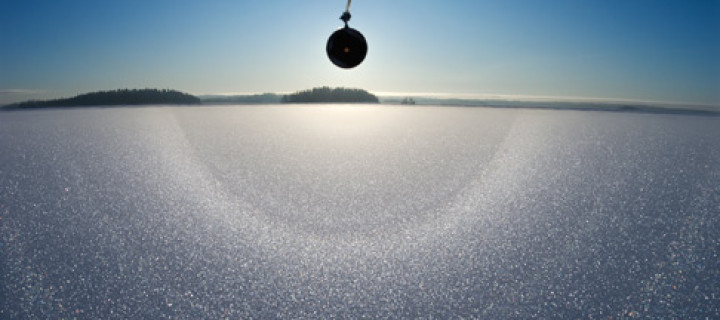
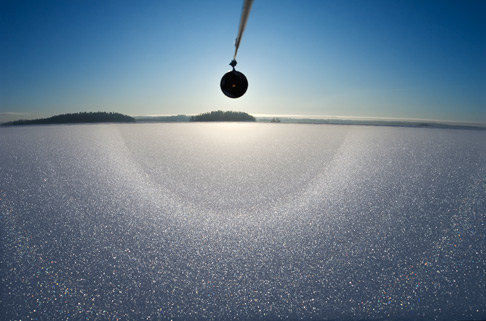
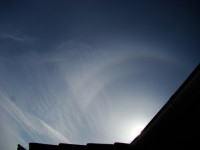
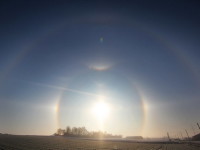
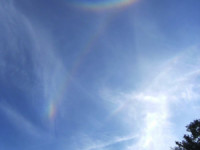
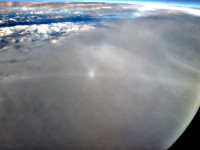
Excellent! Nice photos.
Maybe in Photoshop one could experiment with blendings such as colour or saturation as well. Don’t know how they would work, and I can’t experiment because I don’t have surface halo photos either.
I have tried various blend modes with diamond dust displays and always come back to normal or in some rare cases lighten modes. I think once I used some other mode but it was a one off experiment.
Jukka’s idea is worth testing with a surface display. I wish we could blend the blend modes somehow. Say, 80% lighten mode and 20% of some of those other modes.
If anybody wants to experiment, I can provide for download, say, 10 image layered file.
Put that layered file online! I’ll do the experiment. Very good service to have a layered file already!
The file becomes too large and Ursa server bandwidth is low. Even if I use jpg’s it is too large. So I will not put it online. Anyway, I tried color and saturation and other modes, and they have no use. Only lighten works.
Lighten stack gives so much better looking photo than average stack, so in the future I’ll probably use it always on snow surface halos. No need to play with usm, just stack and adjust some curves. Of course, it is time consuming, but a good display is worth it. Even if you want to go for completely natural looks, it is probably good to stack 5 or so photos with lighten to rise it on a level of visual perception.
OK, Marko. So those blending modes are out of question. Good to know.
I can provide the space and bandwidth.
And I don’t mind to give it a try…maybe something comes out.
Btw: this stack looks out really good even now.
Well the thing is that I have to put it to Ursa server anyway first so that you can have it, it will be about 300 Mbit. The upload time was 1.5 hours, so I decided not to put it up, because your download times would be the same, I guess. And I tried all the modes, lighten and average were only ones that worked. Surface halos are pretty common folks, go and take some photos. Especially this foggy period should be good, only if sun would show up. I have seen halos on my car windshield every day (streelight) and I think on the snow surface could be rather good stuff.